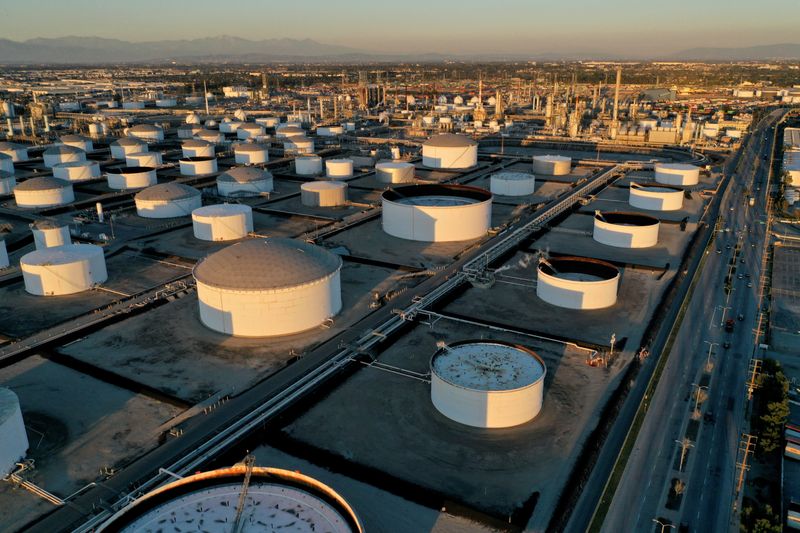By Georgina McCartney
HOUSTON (Reuters) -Oil settled more than 1% higher on Tuesday due to escalating geopolitical risk in Europe and the Middle East, where wars continue to threaten global supply.
futures settled up $1.08, or 1.3%, at $85.33 per barrel. U.S. West Texas Intermediate crude futures ended $1.24, or 1.5%, higher at $81.57 a barrel.
Global benchmark Brent has clambered back from an early-June close of $77.52, yet remains off its $90 peaks from mid-April.
Prices rose after a Ukrainian drone strike caused a large fire in a fuel tank at an oil terminal in Russia’s southern port of Azov, according to Russian officials and a Ukrainian intelligence source.
The port of Azov has two oil product terminals, which handled a total of about 220,000 tons of fuel for export during the period from January to May.
The ongoing attacks on Russia’s oil refining complex pose a threat to physical global supply, as well as boosting the risk premium priced into crude futures.
“The Ukrainian attack reminds the market that Russian energy infrastructure is very much in the crosshairs, the global market needs those barrels of crude and refined products to keep prices in check,” said John Kilduff, partner at Again Capital.
Meanwhile, Israeli Foreign Minister Israel Katz warned that a decision on an all-out war with Hezbollah was coming soon even as the U.S. tries to avert a greater war between Israel and Lebanon’s Hezbollah movement.
Special envoy Amos Hochstein to U.S. President Joe Biden, said he had been dispatched to Lebanon immediately following a brief trip to Israel because the situation was “serious.”
“Everywhere you look the geopolitical risk factor is very high,” Price Futures Group’s Phil Flynn said.
“We have not seen a major impact on supply but that could change really quickly,” he added.
Prices also climbed after New York Federal Reserve President John Williams said interest rates will come down gradually but gave no precise timetable.
Later, oil came under pressure when Boston Federal Reserve President Susan Collins cautioned that it was “too soon to determine whether inflation is durably on a path back to the 2% target.”
The market is also watching U.S. stockpile data due this week for hints on the oil demand outlook during summer driving season.
{{8849|U.S. crcrude oil inventories posted a surprise build last week while gasoline stocks fell, market sources said, citing American Petroleum Institute figures.

The API figures showed crude stocks rose by 2.264 million barrels in the week ended June 14, the sources said on condition of anonymity, compared with an expected draw of 2.2 million barrels. Gasoline inventories fell by 1.077 million barrels, and distillates rose by 538,000 barrels.
Official inventory data from the U.S. Energy Information Administration will be released at 11:00 a.m. EDT on Thursday, delayed a day due to the Juneteenth holiday. [EIA/S]

